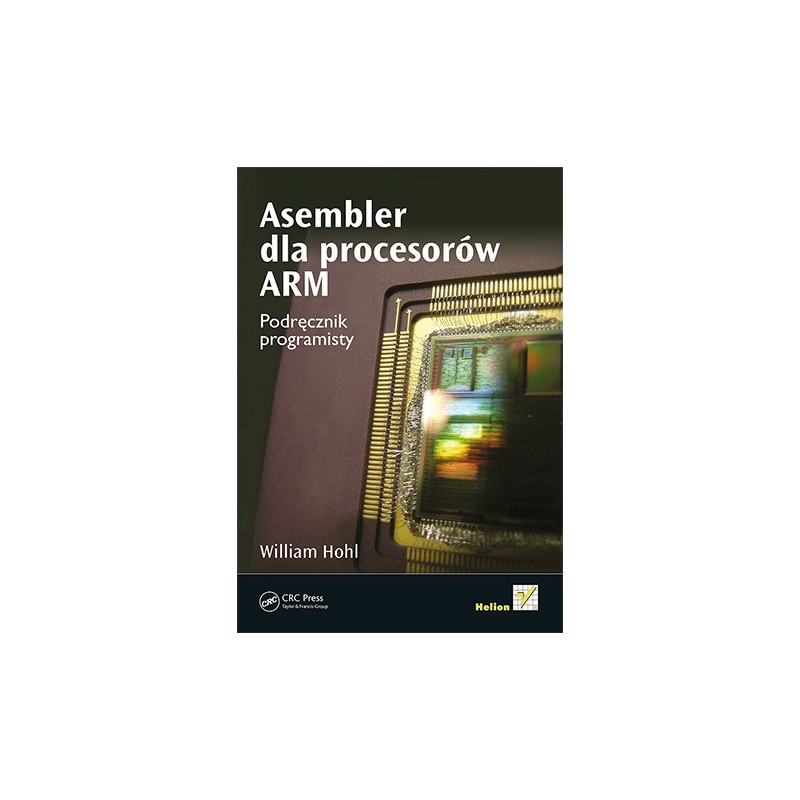- Out-of-Stock



Hohl William
Original title: ARM Assembly Language: Fundamentals and Techniques
Translation: Paweł Gonera
ISBN: 978-83-246-9319-1
Release date: 2014-10-10
Format: 168x237
Pages: 352
About the book
Programmer's guide!
Until recently, not many people were aware of the existence of solutions such as ARM processors. This state of affairs has changed the invasion of mobile devices: tablets, smartphones and platforms such as Raspberry Pi. A new challenge emerged from professional programmers - getting to know the assembler of the ARM platform.
If you belong to this group, you've come across a great book devoted to this topic. During the reading you will become acquainted with the ways of representing numbers and characters and the ARM7TDMI programming model. Then you will create your first program using assembler and you will learn the language's directive. Further chapters are further elements of programming in assembler language. Addressing, loading data, logical and arithmetic operations, loops and conditional instructions are just some of the issues addressed. With this book you will also gain valuable knowledge about peripheral devices and handling exceptions. The book is an excellent read for all programmers creating software for ARM processors.
Thanks to this book:
Discover the secrets of the assembly language for ARM processors!
Table of Contents
Introduction (11) Acknowledgments (15) Information about the software (17) Author (19) Chapter 1. Overview of computer systems (21)
Chapter 2. ARM7TDMI programming model (47)
Chapter 3. The first programs (55)
Chapter 4. Directives and rules for using assembler (65)
Chapter 5. Loading, saving and addressing (79)
Chapter 6. Constants and literal literal pools (95)
Chapter 7. Logic and arithmetic operations (107)
Chapter 8. Loops and jumps (131)
Chapter 9. Boards (145)
Chapter 10. Subroutines and Stacks (157)
Chapter 11. Exception handling (173)
Chapter 12. Peripherals with mapped memory (199)
Chapter 13. THUMB (217)
Chapter 14. Combining C and Assembler (227)
Appendix A. ARM V4T instruction set (239) Appendix B. Using Keil tools (339)
Appendix C. ASCII Character Codes (345) Glossary (347) References (349) Index (350)
Single board computer with STM32F217VG microcontroller (ARM Cortex-M3, 1024 kB Flash, 128 kB RAM, LQFP100).
No product available!
No product available!
No product available!
Permanent cylindrical neodymium magnet with a diameter of 15 mm and a height of 3 mm.
No product available!
No product available!
No product available!
SDR (Software Defined Radio) receiver that allows you to receive signals in the frequency range from 10 kHz to 1 GHz. It is ideal for both monitoring low frequencies and receiving signals on higher bands
No product available!
No product available!
The adapter is designed for mounting LEGO wheels on a hexagonal axis with a diameter of 3 mm used, among others. in Tamiya gears. Pololu 1011
No product available!
No product available!
ROSA3D filament made of high-quality PLA granules. 3 kg of filament with a diameter of 1.75 mm is wound on the spool. ROSA3D PLA Starter Black
No product available!
The evaluation kit is equipped with the Lattice iCE40 HX FPGA chip. The kit is supported by iCEcube2 and Verilog and Lucid languages. SparkFun DEV-16526
No product available!
Brushless motor Turnigy D3536 / 6 1250KV type Outrunner (HK18227)
No product available!
No product available!
No product available!
No product available!

Hohl William
